The Gardens of Eyrignac: A Dordogne jewel that was the vision of one incredible man
Gilles Sermadiras's family were horrified when he announced that he was to build a garden, and he did so while barely ever seeing another.

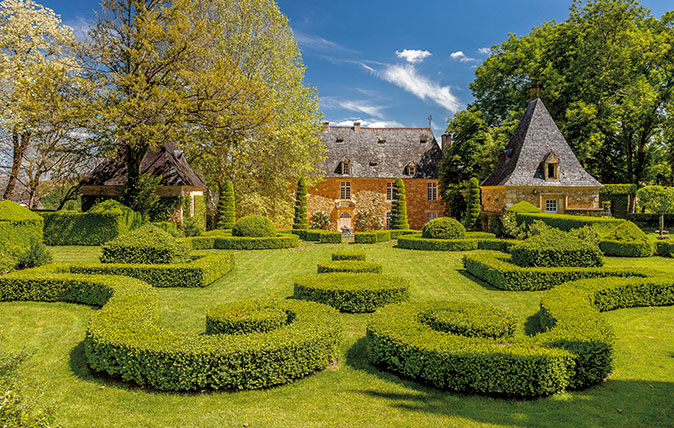
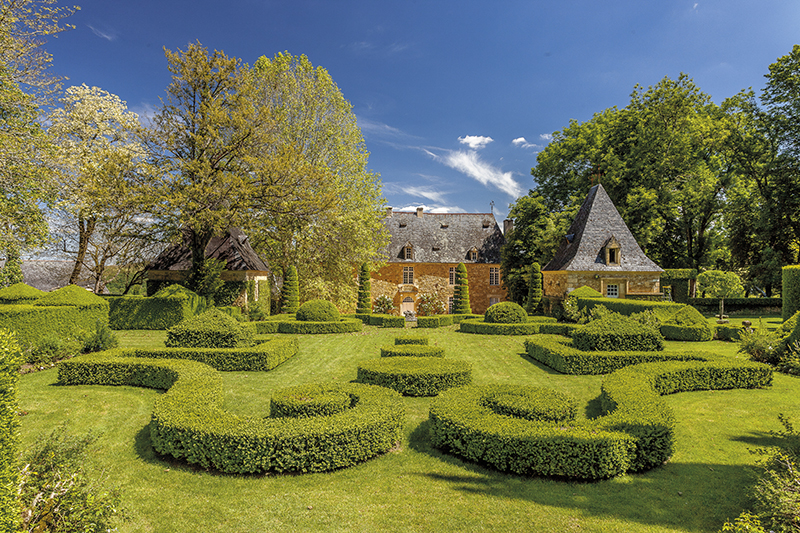
Country Life is running a tour of the Dordogne in association with Boxwood Tours from September 19 to 23 this year - scroll to the bottom of this article or click here for more details.
It has to be said that garden design was a fairly neglected sport in France during the 1960s. Although other creative arts flourished on Gallic soil and French cars, films and haute couture stole the limelight, those in possession of an aristocratic acre or two tended to look back to the grand old days of Le Nôtre or longingly across the Channel to the Arcadian landscapes of Repton and Brown or the painterly borders of Gertrude Jekyll.
The now prestigious École Nationale Supérieure de Paysage in Versailles only opened the gate to its first students in 1976; in the 1960s, garden design was something that either one’s ancestors or foreigners did.
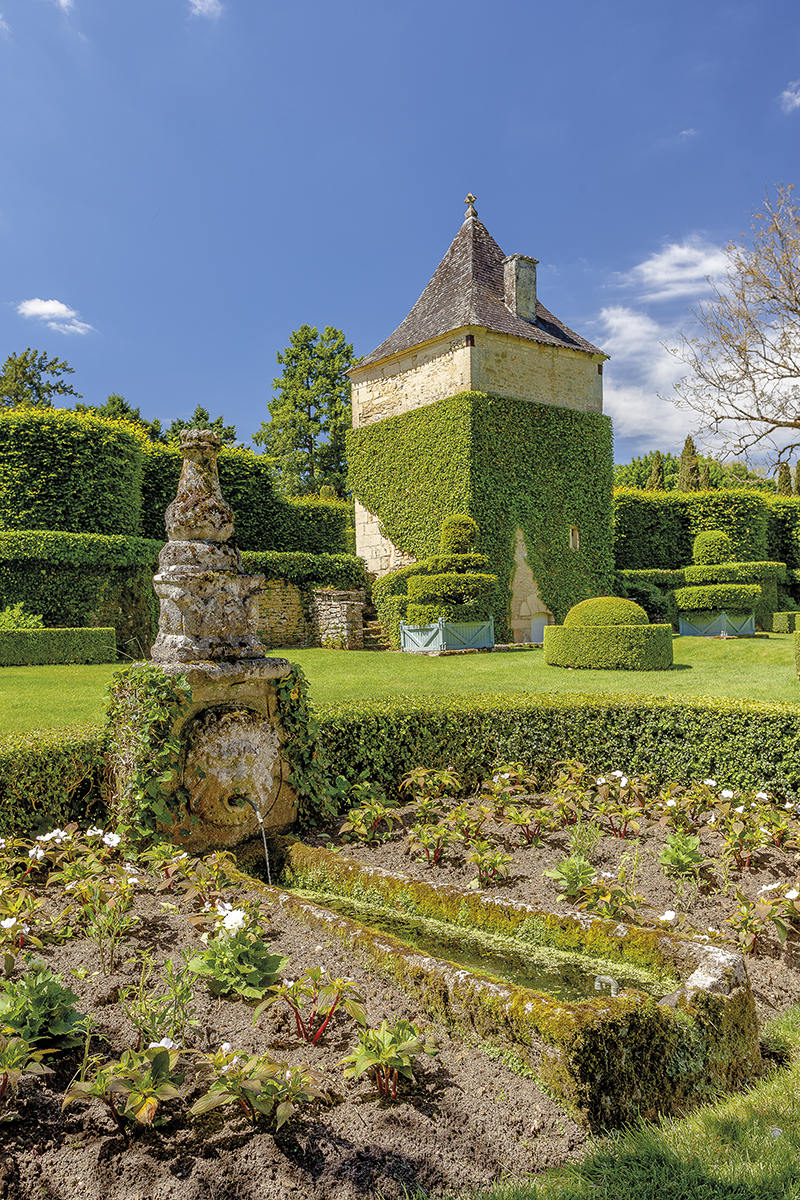
No wonder there were cries of ‘mais non!’ when, in 1964, Gilles Sermadiras de Pouzols de Lile announced to his horrified family that he was intending to plough all resources at his disposal into the creation of a dramatically new, 10-acre garden of his own design at Eyrignac, the family domaine for more than 500 years and 22 generations.
Born in 1909, M. Sermadiras had grown up at Eyrignac, a manorial estate secreted in the wooded hills of the Périgord Noir above Sarlat. As a boy, he loved exploring the neglected grounds, imagining them in their 18th-century heyday, mentally re-creating the formal hedges, terraces and fountains and the fêtes galantes of those times.
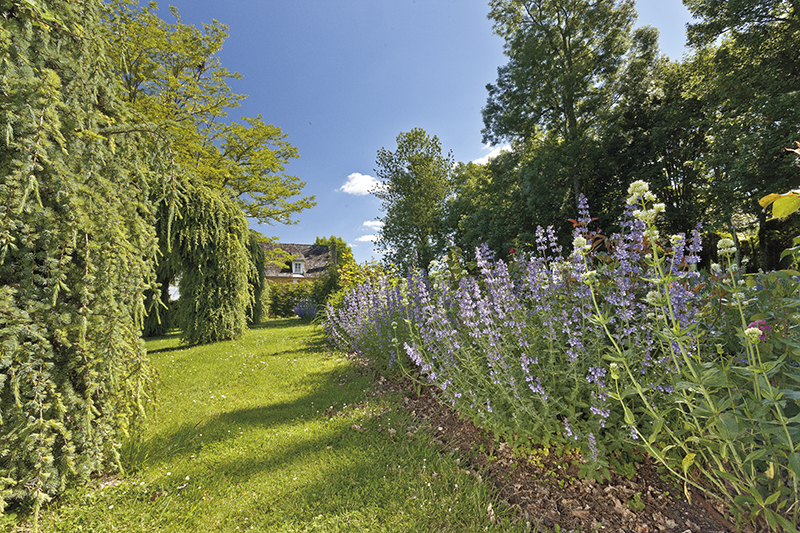
The stone pools and steps remained, buried beneath the overgrowth, but all the formal planting had been replaced in the mid 19th century by a grandfather mad for the prevailing style anglais, interpreted as bosky clumps of bamboo and palm threaded with fiddly paths and swathes of lawn.
His own father hadn’t seen the point of gardens and left it all to grow wild, making it a suitably melancholy place for a youth to contemplate unhappily the career as a Parisian lawyer that had been mapped out for him. Fortunately, law and parental design yielded to art and native talent and M. Sermadiras launched himself into the world of interior design.
Exquisite houses, the beauty of Nature, and how to get the most from your life, straight to your inbox.
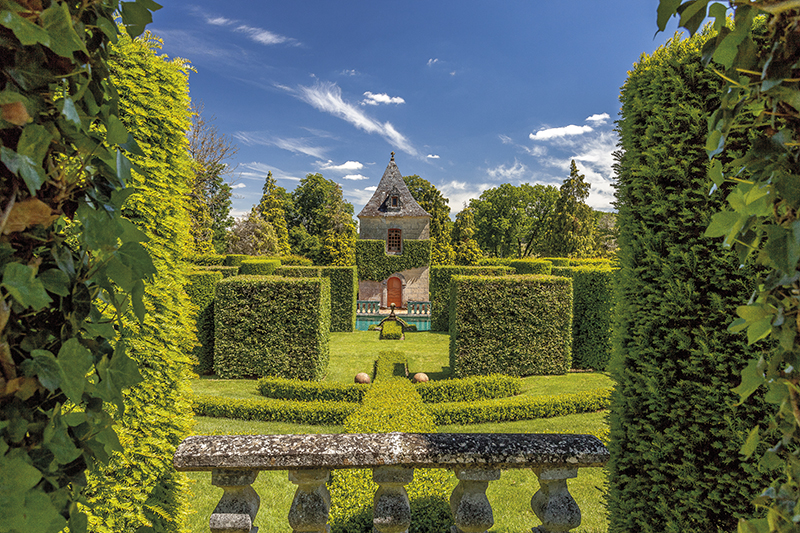
Over the next three decades, while he established his business, his ambition to make a garden at Eyrignac never wavered and, as soon as time and funds were on his side, he made his announcement.
‘All through my life,’ he often said, when describing what motivated him to make the garden, ‘I’ve been haunted by a longing for harmony. Harmony between people, places, things.
‘Life wasn’t very harmonious here when I was growing up and there was discord too, between the harmonious proportions of the manor house and the overgrown grounds that surrounded it. I wanted to restore that necessary balance.’
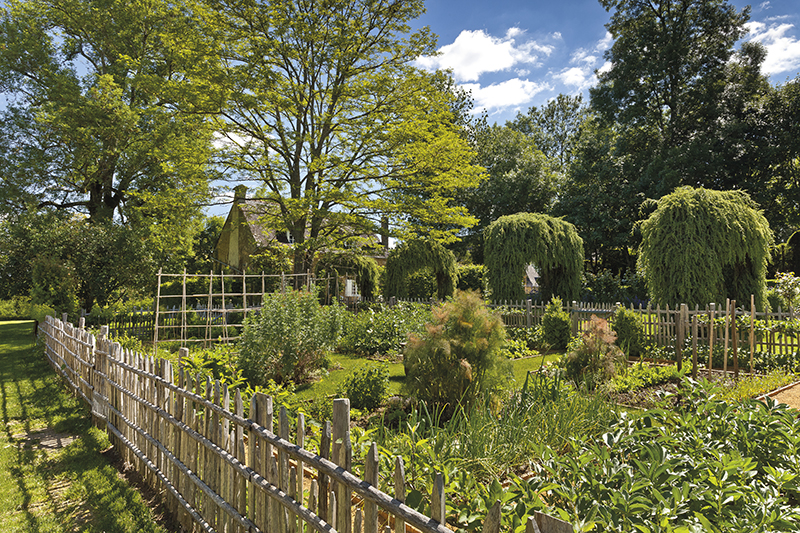
For a while, he played with the idea of restoring the gardens in a historical sense, too, but eventually rejected that plan. Instead, the garden was to be a personal creation, guided as much by his generous, fun-loving nature as by his desire for order and harmony.
By his own admission, he hardly ever visited other gardens; all his inspiration came from within himself.
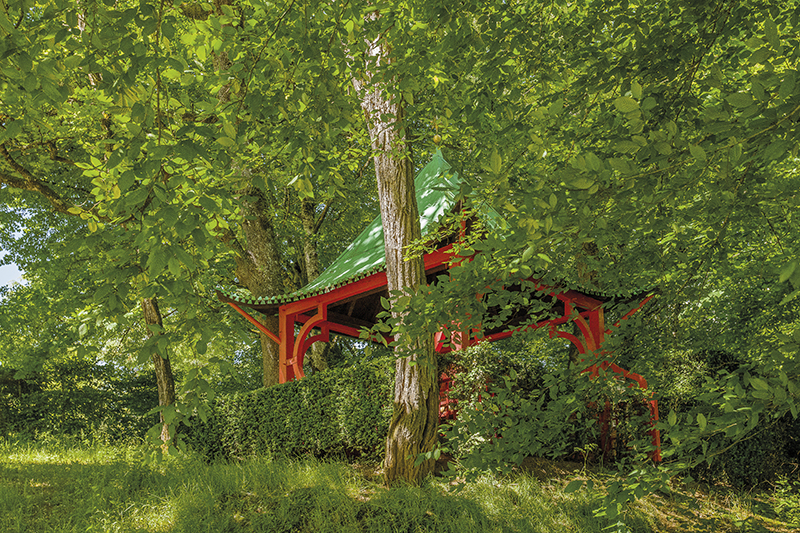
Alone, he mapped out and oversaw the planting of a sequence of green allées and chambers, bringing a kind of rhythmic precision to the ensemble of original buildings, guided only by instinct.
This extraordinary man lived to be 98.
‘The funny thing is,’ he said when he was 90, ‘I never get tired of wandering through this garden. I see something new each time, depending on the light.
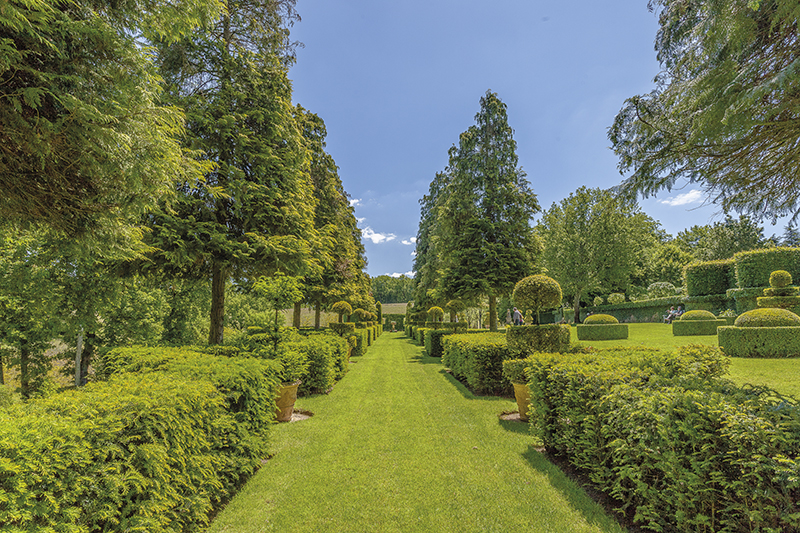
'And when people ask me if there’s anything I’d like to change, I say no… I made it with my soul and my character and that’s not something I could change.’
There are no great architectural fanfares or tree-lined avenues heralding the approach to Eyrignac. A small road winds through lightly wooded hills, opening out to give views of valleys sheltering walnut groves and orchards with flocks of fat geese crowding together in the shade.
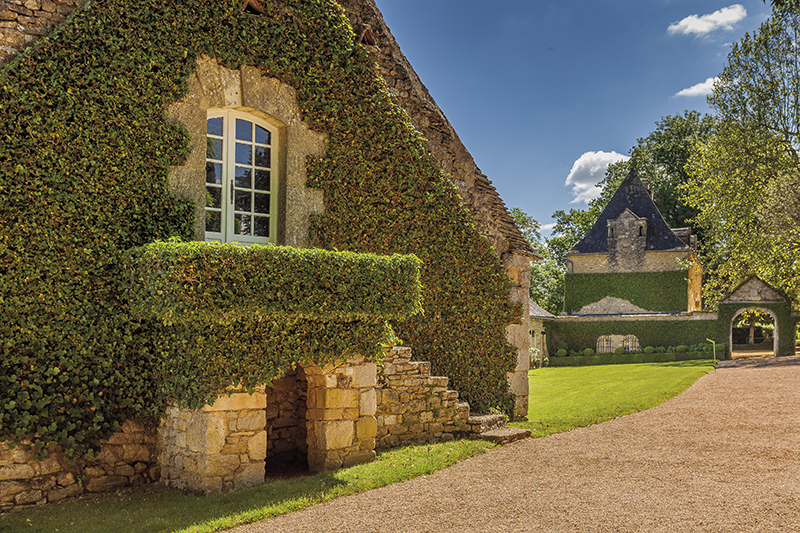
Young oaks, thinned to allow each tree room to grow, populate the flanks of the winding drive. There is no sight of the manor house on arrival, just ancient barns and stable blocks, and the garden is only reached after crossing an unfenced, grassy former schooling paddock (the Sermadiras family is very horsey).
The elegant house was rebuilt in 1653 on medieval foundations and its sandy forecourt and adjacent chapel and dovecote are buried deep within the gardens. There’s something splendidly Baroque – even theatrical – about the green architecture, composed of hornbeam, yew and box that define and contain each controlled view on the way to the manor and beyond.
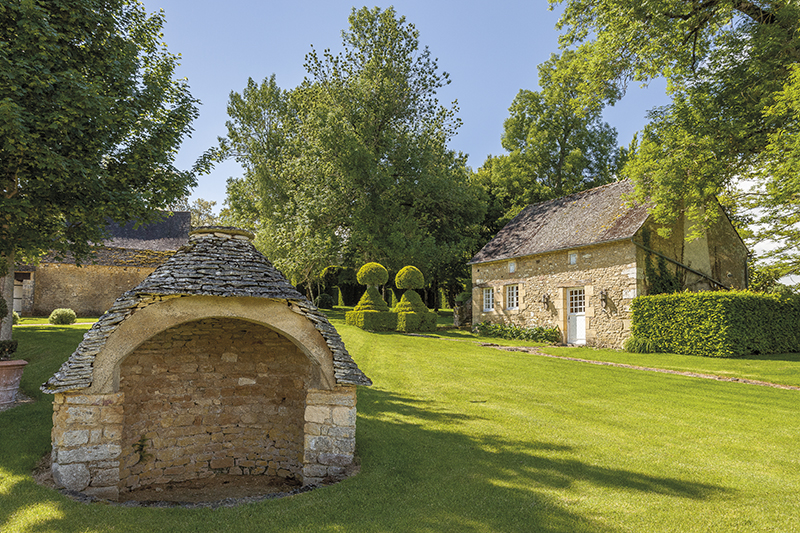
Regular clippings throughout the year ensure that the topiary hedges never lose their crisp definition and visits are rare that don’t contain a fascinating glimpse of a perfected technique in progress.
Teams of three or four gardeners, armed with strings and measuring rods, frames and hand shears, under the foreman’s constant surveillance, work together on a single section of hedge or individual plant; perfect harmony comes at a high labour cost.

However, despite this precision, there is no mistaking Eyrignac’s green architecture reflecting the rigorous formality of Le Nôtre’s work or indeed with any other topiary garden (of which there are many fine examples in this part of the Dordogne). It’s delightfully unique, just like its creator.
Patrick Sermadiras, Gilles’s son, was a teenager in the 1960s and was fascinated by the new garden he saw rising from the wilderness.
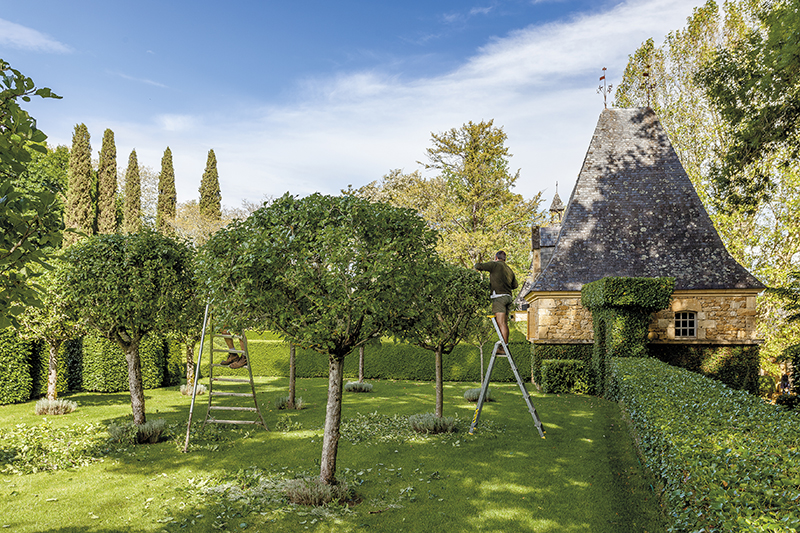
‘I was 16 when he made the big announcement,’ he recalls, ‘and while my grandmother and uncles were protesting, I was thrilled by my father’s plans.’ However, as he grew into adulthood and a career in advertising, he started to understand that his father’s vision was likely to outstrip his means.
Opening to the public, in order to meet the costs of employing five full-time gardeners, seemed an implausible solution. ‘I simply didn’t believe that anyone would want to come,’ said Patrick in 1987, astonished that 700 people had visited that first summer it was opened to the public. (Thirty years and much publicity later, that number has risen to 100,000 visitors per annum, making it one of France’s most visited gardens.)
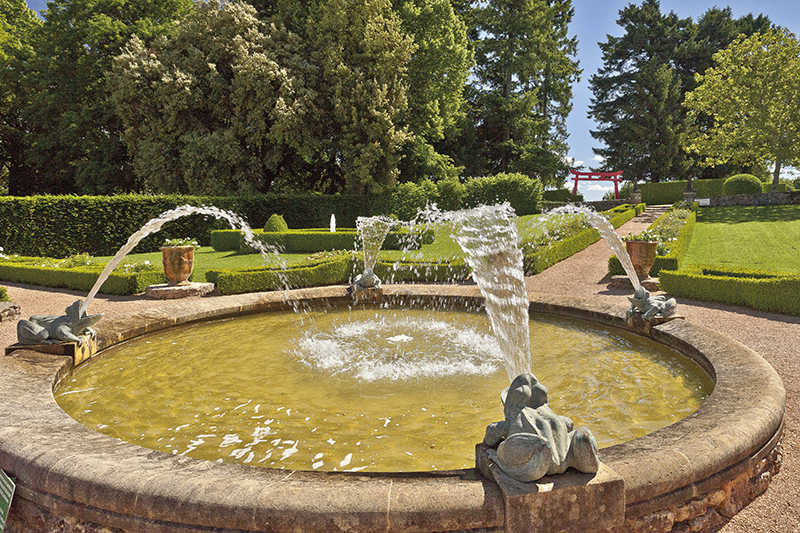
Although the topiary gardens serve as Eyrignac’s defining image – the hornbeam allée has achieved an almost iconic status on a par with Monet’s bridge over the waterlilies at Giverny or the potager parterres at Villandry – later developments have broadened the appeal of the gardens. A tall red, wooden portal, similar to a Japanese torii, introduces the visitor to the startling concept of colour and landscape after so much all-enclosing greenery.
By way of gentle introduction to this theme, a circular garden, brimming with Iceberg, Opalia, Fée des Neiges and Albéric Barbier roses, daisy-white argyranthemums and pinky-white gaura (the whole ensemble enlivened by the white froth of a four-jetted fountain) is set against a backdrop of hill and valley, where morning mist lingers in the receding folds of the land.
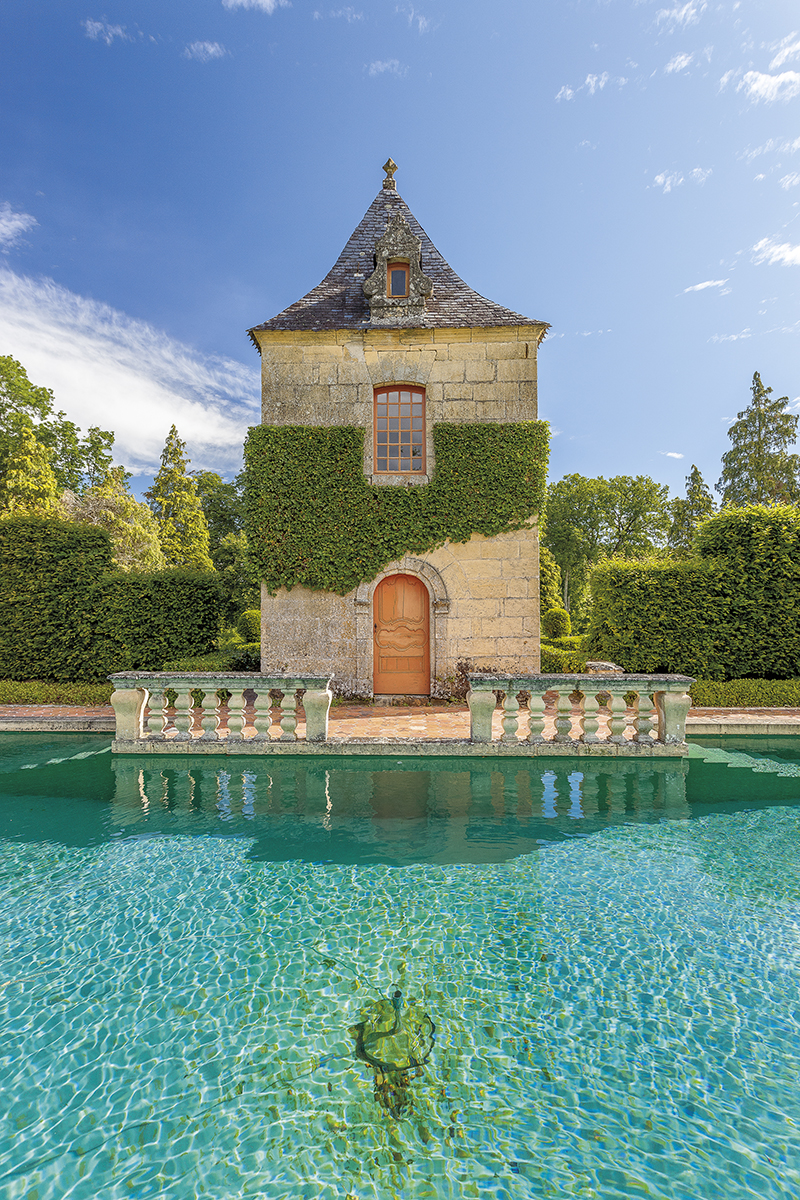
Lower down, below a newly-sown wildflower meadow, Patrick’s wife, Capucine, has designed a colourful potager, a rainbow exemplar of companion planting as well as a cut-flower garden providing dahlias, zinnias, roses and cosmos for the house.
To the late M. Sermadiras’s delight, during the ground clearance in the 1960s, he uncovered a small stone figure of a youth, leaning on a funerary urn, one foot resting on an hourglass, one hand carrying a torch. The little god of time passing has become the potent symbol of Eyrignac’s history, which continues to be written by this remarkable family, as young Gilles, the teenage son of Patrick and Capucine, is poised to receive the torch himself one day.
Les jardins du manoir d’Eyrignac, 24590 Salignac, Dordogne–Périgord, France. For opening times, visit www.eyrignac.com
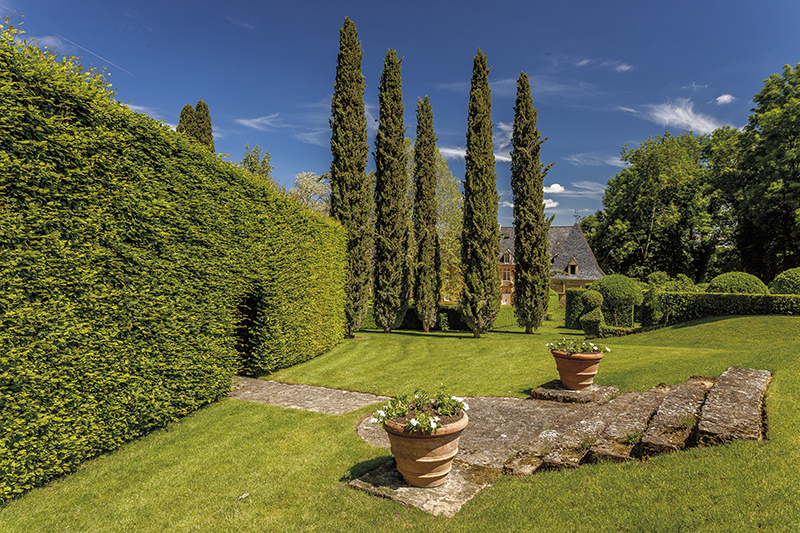
Country Life goes to the Dordogne
In association with Boxwood Tours, Country Life is delighted to announce an exclusive tour, from September 19 to 23, enjoying the gastronomy and gardens of the Dordogne. The trip to his fascinating region will be hosted by Country Life contributors David Wheeler and Kirsty Fergusson.
From our comfortable base at Le Vieux Logis, a member of Relais & Châteaux with a Michelin-starred restaurant, our tailor-made tour explores the Dordogne’s varied horticultural gems, frequently in the company of their owners.
As well as Marqueyssac, we explore romantic Sardy and the medieval Château de Losse, with its sensitively restored gardens and château. Hautefort boasts immaculate formal gardens and les jardins du manoir d’Eyrignac reveal topiary at its best. The Chartreuse du Colombier includes a walled garden, potager, Baroque pavilion, avenues and borders full of old roses and traditional flowers.
The cost is £3,325 per person (single supplement £300), which includes four nights’ accommodation at Le Vieux Logis, meals with local wines and return flights from London Gatwick. For more information, visit www.boxwoodtours.co.uk or telephone 01341 241717.
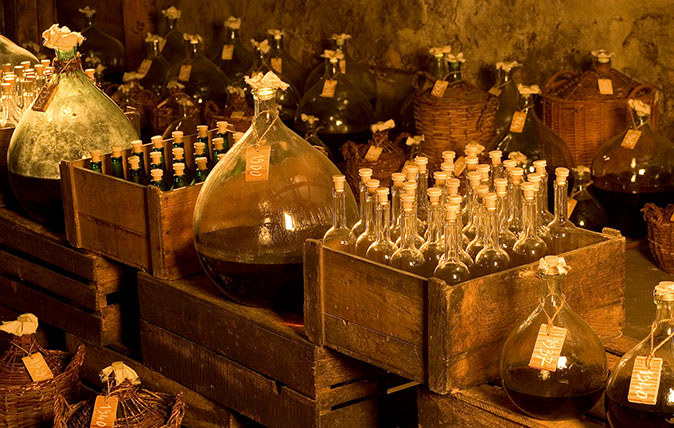
Credit: Picture: Bureau National Interprofessionnel de l'Armagnac
Armagnac: The beautiful, high-class brandy steeped in history and tradition
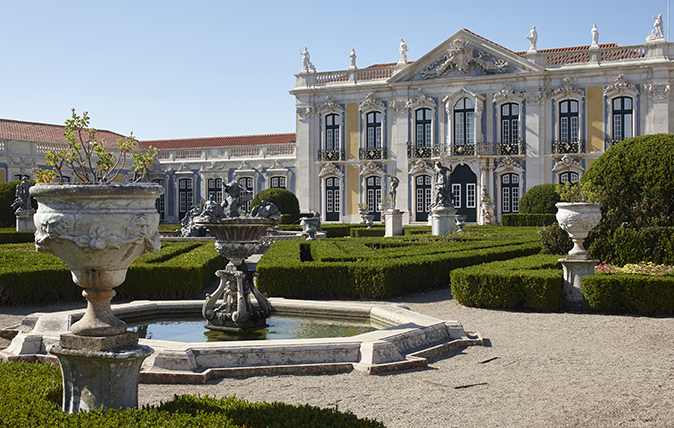
The Portuguese paradise dotted with masterpieces of English sculpture
Tim Richardson takes a look at a slice of Portugal place famed for its English lead sculptures.
Country Life is unlike any other magazine: the only glossy weekly on the newsstand and the only magazine that has been guest-edited by His Majesty The King not once, but twice. It is a celebration of modern rural life and all its diverse joys and pleasures — that was first published in Queen Victoria's Diamond Jubilee year. Our eclectic mixture of witty and informative content — from the most up-to-date property news and commentary and a coveted glimpse inside some of the UK's best houses and gardens, to gardening, the arts and interior design, written by experts in their field — still cannot be found in print or online, anywhere else.
